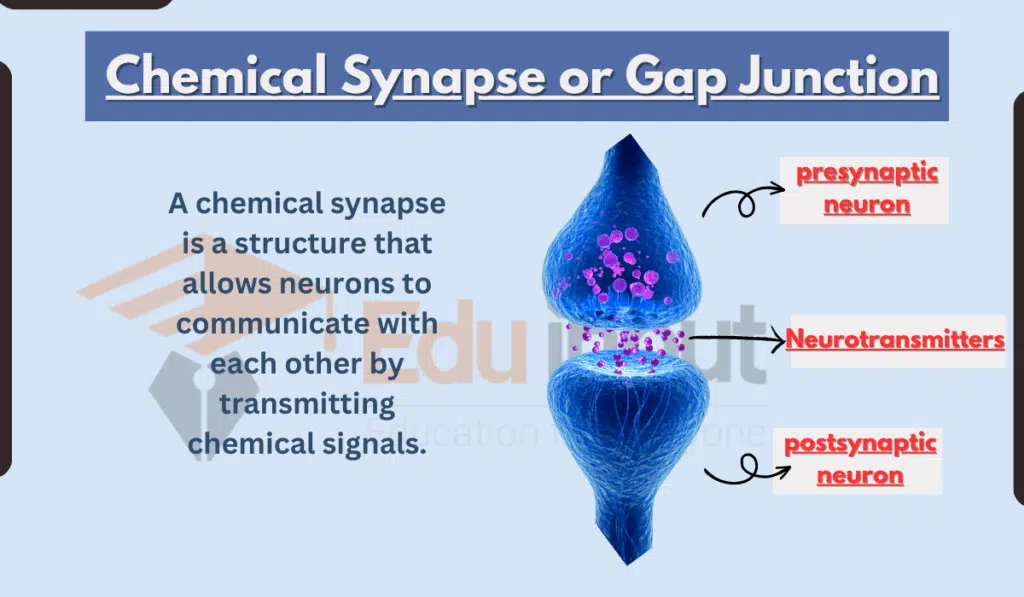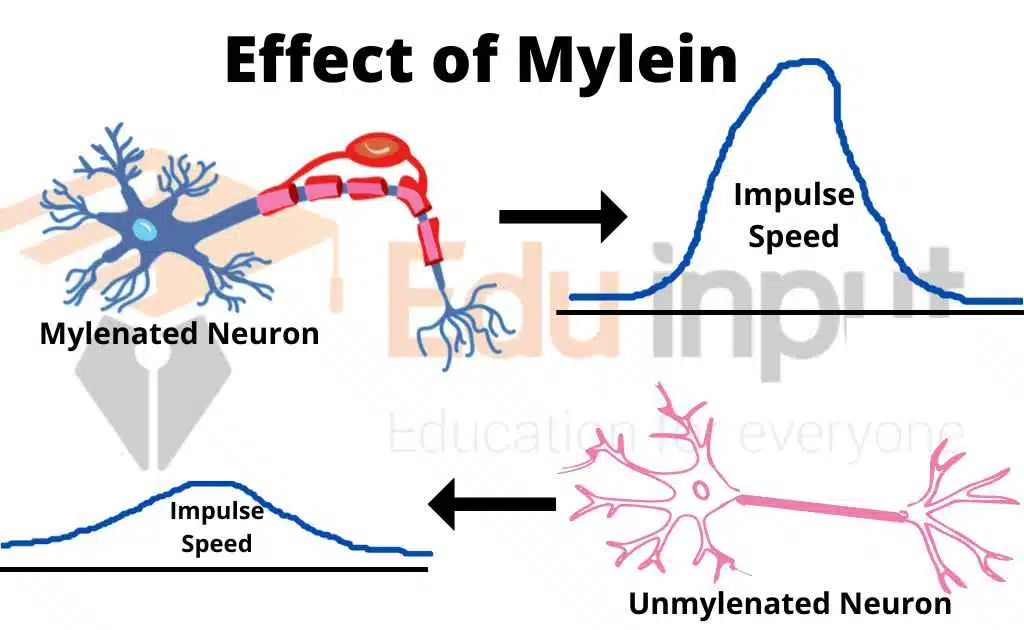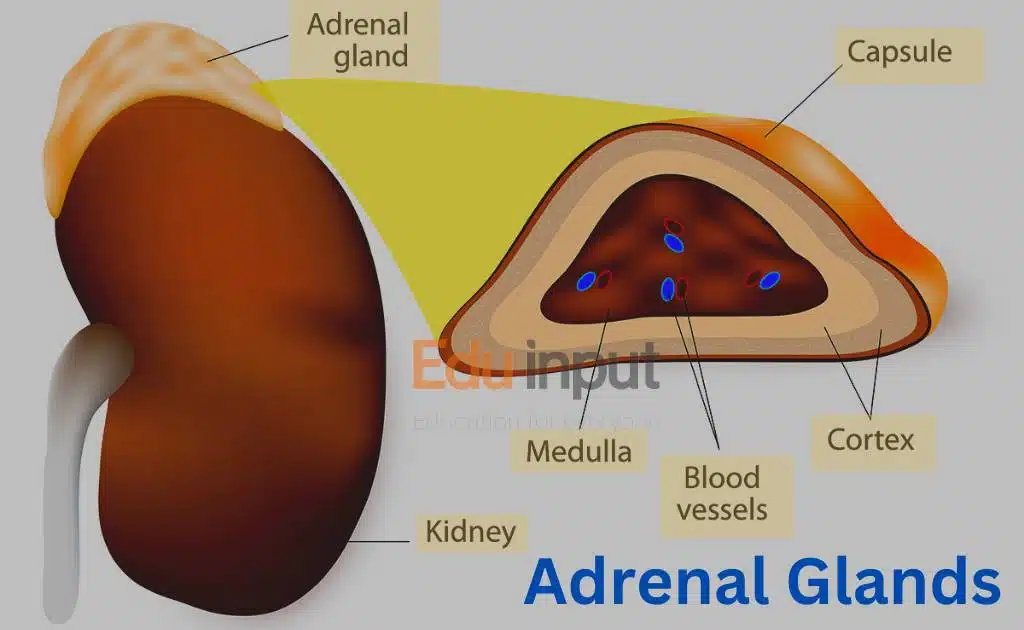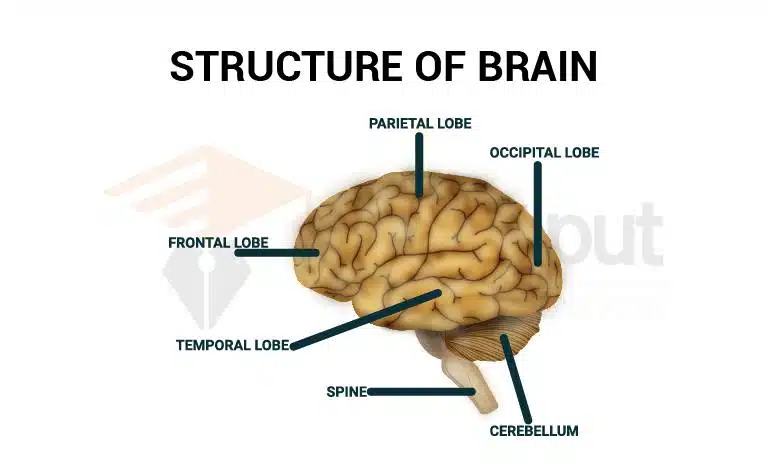Chemical Synapse-Steps, Types, Examples, and Functions
Chemical Synapse Definition
A chemical synapse is a structure that allows neurons to communicate with each other by transmitting chemical signals. It is formed by the apposition of the presynaptic and postsynaptic membranes, with a small gap between them called the synaptic cleft.
Chemical synapse is different from electrical synapse, as it is being carried by chemicals called neurotransmitters.

Also Learn About all Types of Synapse and Electrical Synapse
Chemical Synapse Process
Here are steps of chemical synapse in neuron:
- An action potential reaches the axon terminal of the presynaptic neuron.
- Voltage-gated calcium channels open in the axon terminal.
- Calcium ions flow into the axon terminal.
- Neurotransmitters are released from the synaptic vesicles.
- The neurotransmitters diffuse across the synaptic cleft.
- Neurotransmitters bind to receptors on the postsynaptic neuron.
- Ion channels open in the postsynaptic neuron.
- Ions flow across the postsynaptic membrane, creating a postsynaptic potential.
Types of Chemical Synapse
There are two main types of chemical synapses:
1. Excitatory synapses
Excitatory synapses release neurotransmitters that make the postsynaptic neuron more likely to fire an action potential.
2. Inhibitory synapses
Inhibitory synapses release neurotransmitters that make the postsynaptic neuron less likely to fire an action potential.
There are also a number of other types of chemical synapses, each with its own specific characteristics.
For example, some synapses are fast-acting, while others are slow-acting. Some synapses are plastic, meaning that their strength can be changed by experience, while others are not.
Role of Neurotransmitter at Chemical Synapse
The neurotransmitter is the chemical signal that is released from the presynaptic neuron and binds to receptors on the postsynaptic neuron.
There are many different types of neurotransmitters, each with its own specific effects. Some neurotransmitters are excitatory, meaning that they make the postsynaptic neuron more likely to fire an action potential.
Other neurotransmitters are inhibitory, meaning that they make the postsynaptic neuron less likely to fire an action potential.
The most common neurotransmitters are:
- Acetylcholine-an excitatory neurotransmitter that is involved in a variety of functions, including muscle contraction, learning, and memory.
- GABA-an inhibitory neurotransmitter that is involved in calming and relaxing the brain.
- Glutamate-an excitatory neurotransmitter that is involved in learning and memory.
- Dopamine-an excitatory neurotransmitter that is involved in movement, motivation, and reward.
- Serotonin-an inhibitory neurotransmitter that is involved in mood, sleep, and appetite.
Chemical Synapse Example
A common example of a chemical synapse is the neuromuscular junction, which is the connection between a motor neuron and a muscle cell.
When the motor neuron fires an action potential, it releases the neurotransmitter acetylcholine into the synaptic cleft.
Acetylcholine binds to receptors on the muscle cell, which opens ion channels and causes the muscle cell to contract.
Chemical Synapse Transmission
Chemical synaptic transmission is a process by which information is transmitted from one neuron to another through the release of chemical messengers called neurotransmitters.
The neurotransmitters are released from the presynaptic neuron and bind to receptors on the postsynaptic neuron, which then opens or closes ion channels in the postsynaptic membrane.
This change in the electrical potential of the postsynaptic neuron can either excite or inhibit the neuron.
Chemical Synapse Function
The function of a chemical synapse is to transmit information from one neuron to another. This information can be used to control movement, regulate emotions, or store memories. Chemical synapses are essential for the proper functioning of the nervous system.
What functions as chemical synapse input?
The input to a chemical synapse is the action potential from the presynaptic neuron. The action potential causes the release of neurotransmitters from the synaptic vesicles.
How the chemical transfer occurs across the synapse?
The chemical transfer across the synapse occurs through the diffusion of neurotransmitters from the presynaptic neuron to the postsynaptic neuron.
The neurotransmitters bind to receptors on the postsynaptic neuron, which opens or closes ion channels in the postsynaptic membrane.
How wide is a chemical synapse?
The width of a chemical synapse is typically about 20 nanometers. This is the distance that the neurotransmitters must diffuse across in order to reach the receptors on the postsynaptic neuron.
How neurotransmitters can be removed from a chemical synapse?
Neurotransmitters can be removed from a chemical synapse by a number of mechanisms, including:
- By Reuptake-Neurotransmitters are taken back up by the presynaptic neuron.
- By Degradation-Neurotransmitters are broken down by enzymes.
- By Diffusion– Neurotransmitters diffuse away from the synapse.
The removal of neurotransmitters is important for terminating the signal at the synapse and preventing it from continuing indefinitely.







Leave a Reply